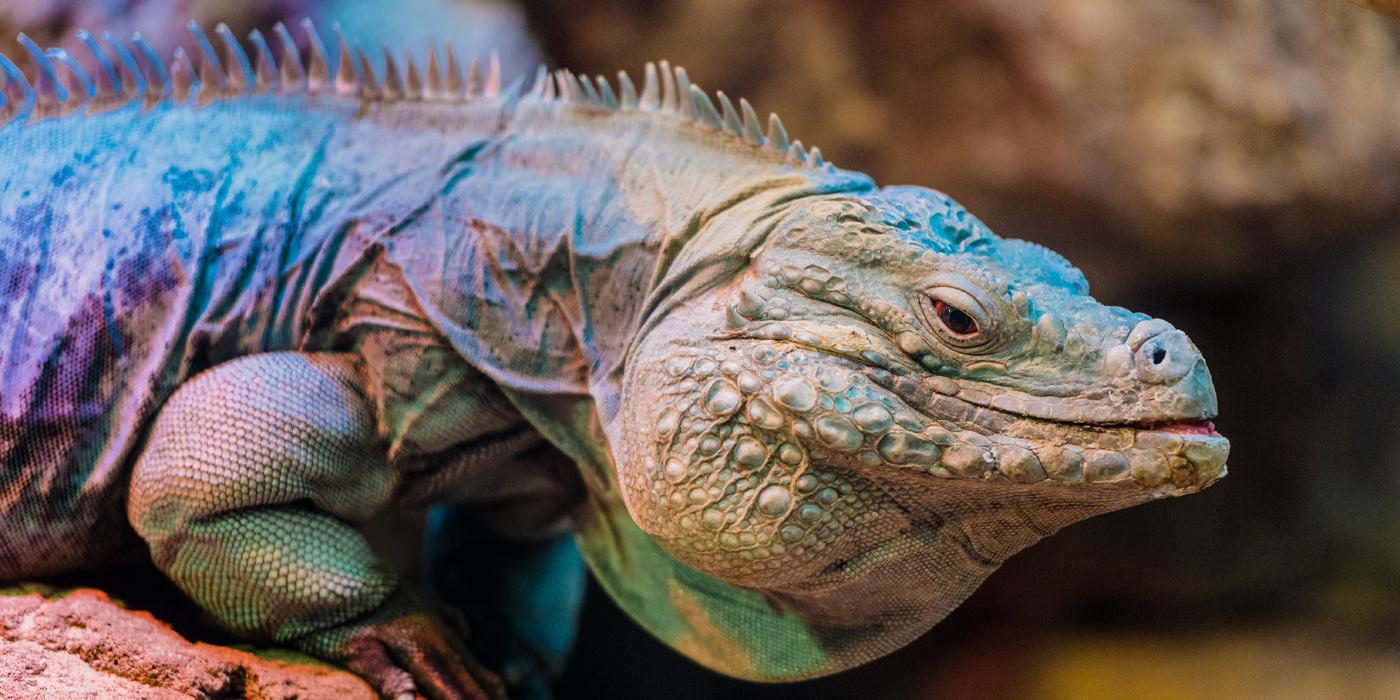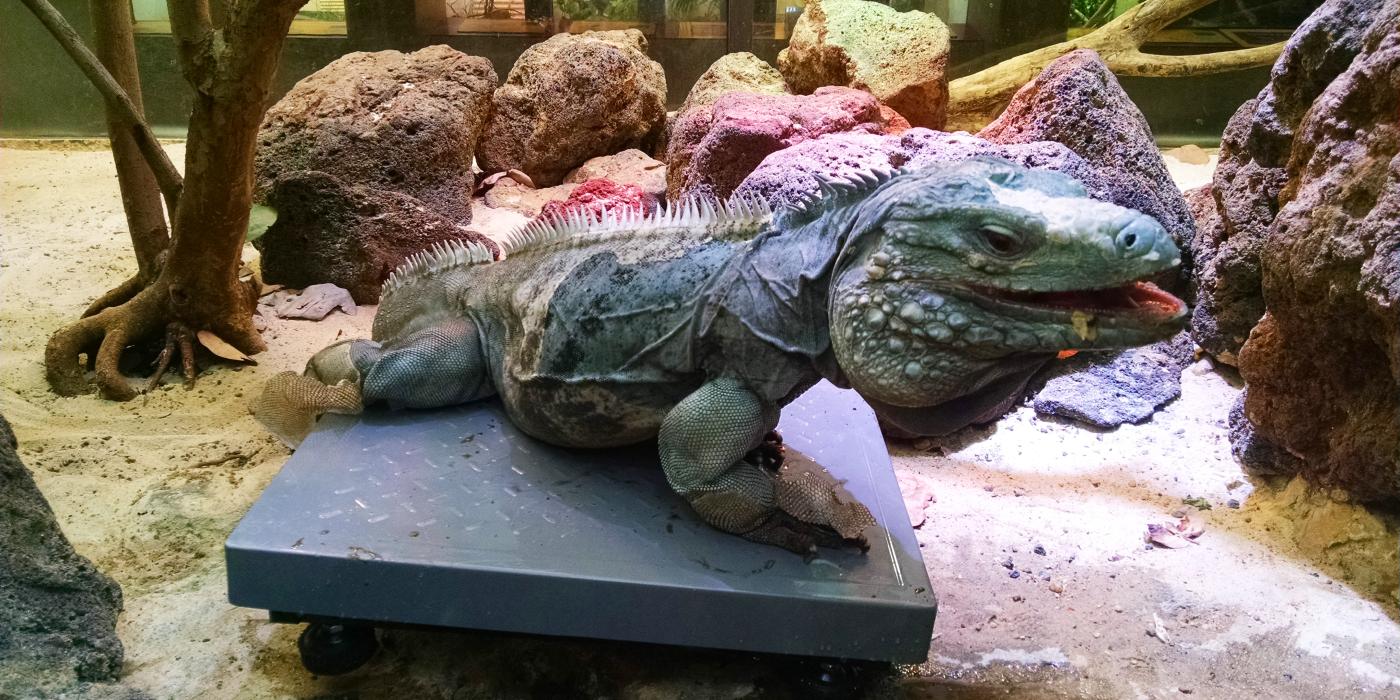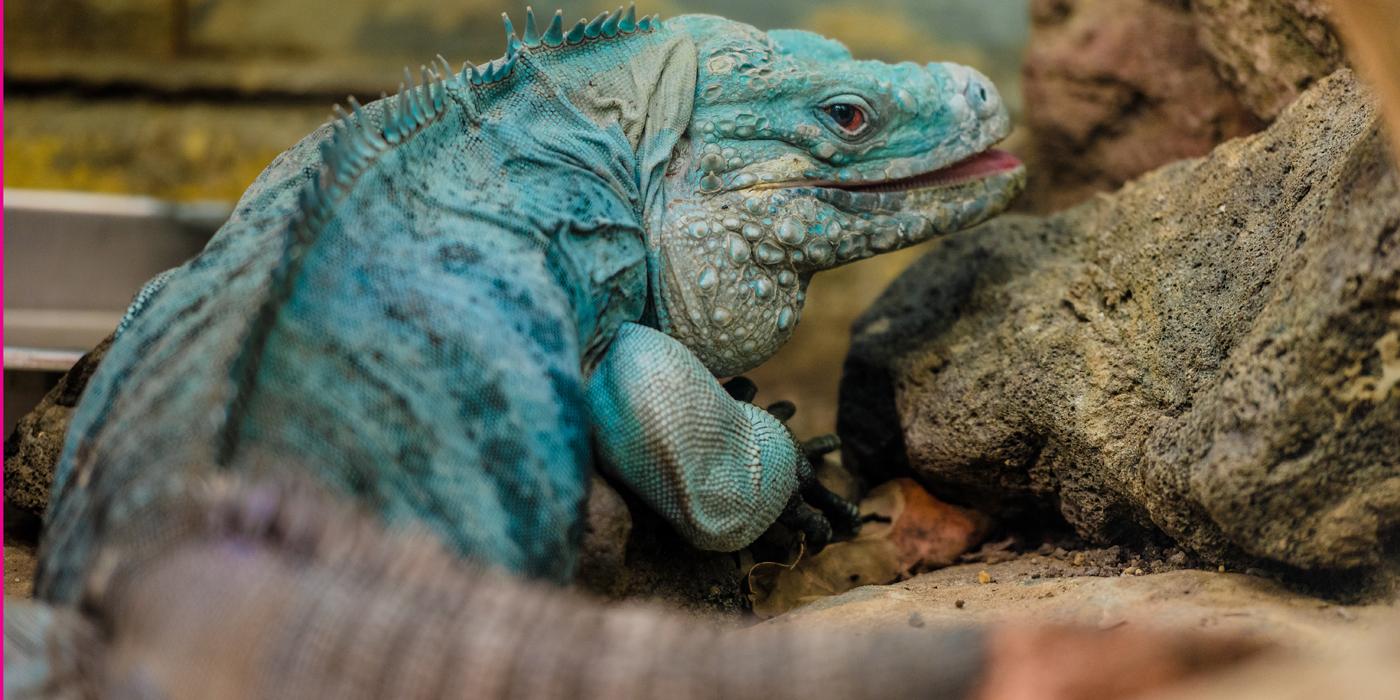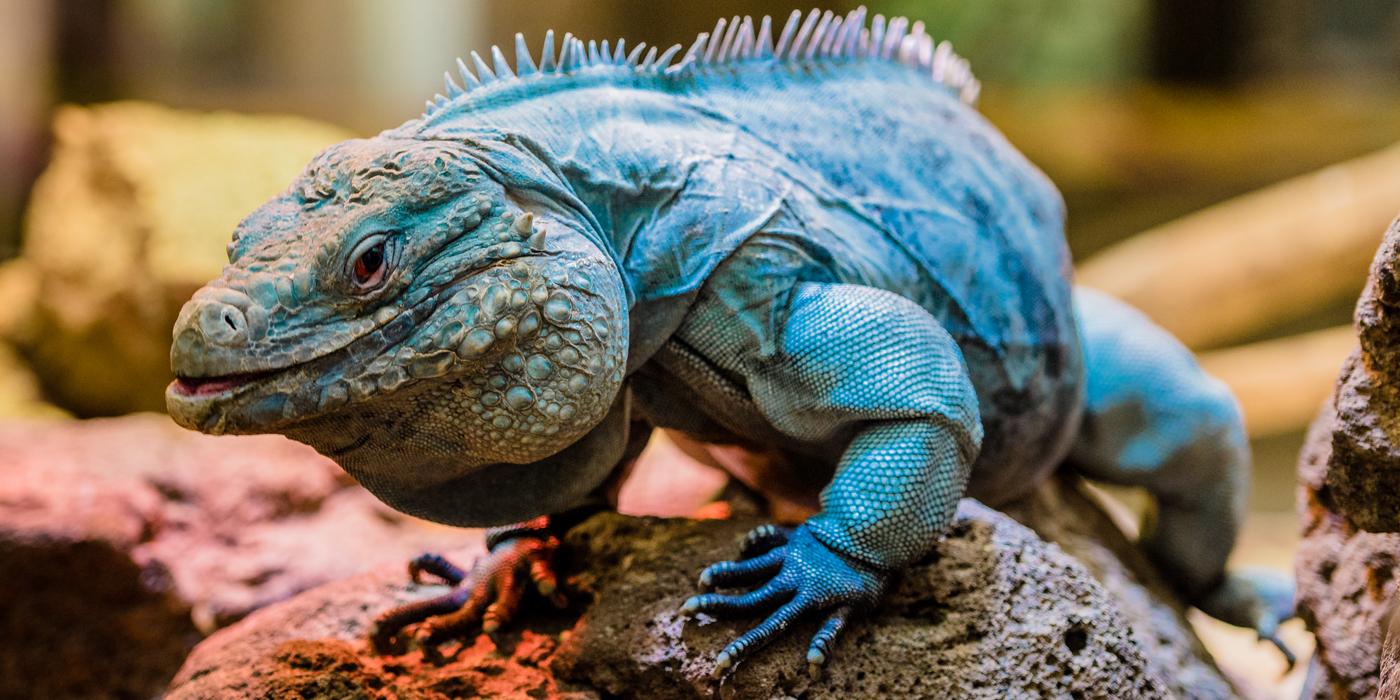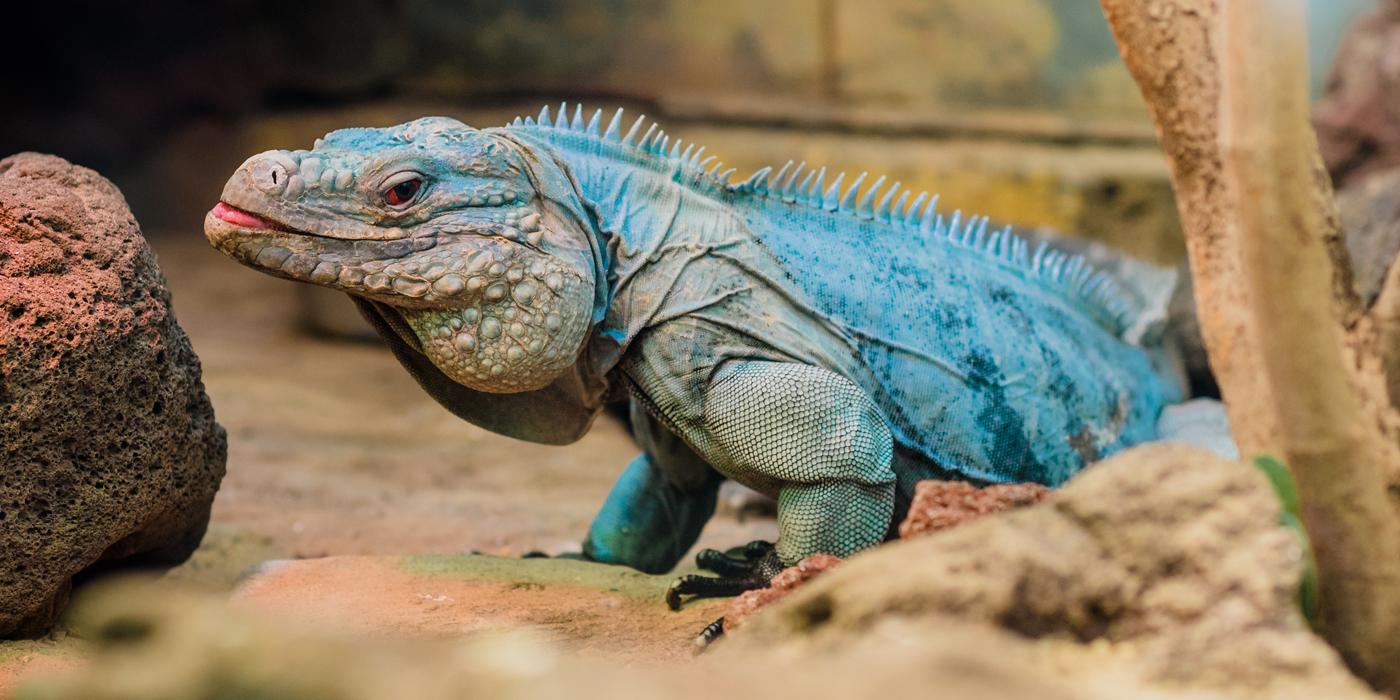A Keeper's Favorite Grand Cayman Blue Iguana Facts
What does it mean when a Grand Cayman blue iguana bobs his head? It could mean “stay away from my territory” or “let’s mate!” Check out the photo slideshow for some of keeper Kyle Miller’s favorite facts about this species.
Intrigued by iguanas? Learn more about this species on our Grand Cayman blue iguana page.
What do Zoo visitors want to know about this species?
The most common question visitors ask me about the blue iguana is, ‘Why is his head bobbing?’ For this species, head bobbing is a form of communication; it can be a threat or a breeding display. However, our male iguana will start bobbing rapidly in excitement when I walk by with his tray of food!
Do iguanas participate in training?
Part of managing animals is keeping track of their weight and ensuring they are in the best condition. For the past couple of years, we have been training our male and female Grand Cayman blue iguanas to climb upon a scale and station (hold still). Both iguanas tend to be curious when it comes to new items being presented to them, especially if food is involved. When they climb on the scale, I offer fruit rewards—they will do just about anything for a piece of banana! This positive reward helps establish a consistent, stress-free and fun way to weigh our iguanas. The male weighs 20.9 pounds and the female weighs 10.3 pounds. The next step in this training is to incorporate voice cues; ideally, I’d like to say “scale” and have them associate that with climbing on the scale for a reward.
How smart are they?
Grand Cayman blue iguanas are fairly intelligent, considering the size of their brain. These animals recognize their keepers and are capable of learning a wide variety of behaviors, as exemplified by the scale training sessions.
Do blue iguanas have any special adaptations?
Unlike some of their green relatives, blue iguanas are not adapted for life in the trees—though they can climb if needed. Instead, these animals are terrestrial. And, their heavily-built bodies are designed for life in a harsh environment. Some can grow up to 5 feet long and can weigh up to 25 pounds.
What's your favorite fact about iguanas?
One of my favorite facts about Grand Cayman blue iguanas is that they are pollinators. In their native habitat, they eat a variety of leafy plants and fruits. They play an important role in the ecosystem just by dispersing seeds through their poop.

